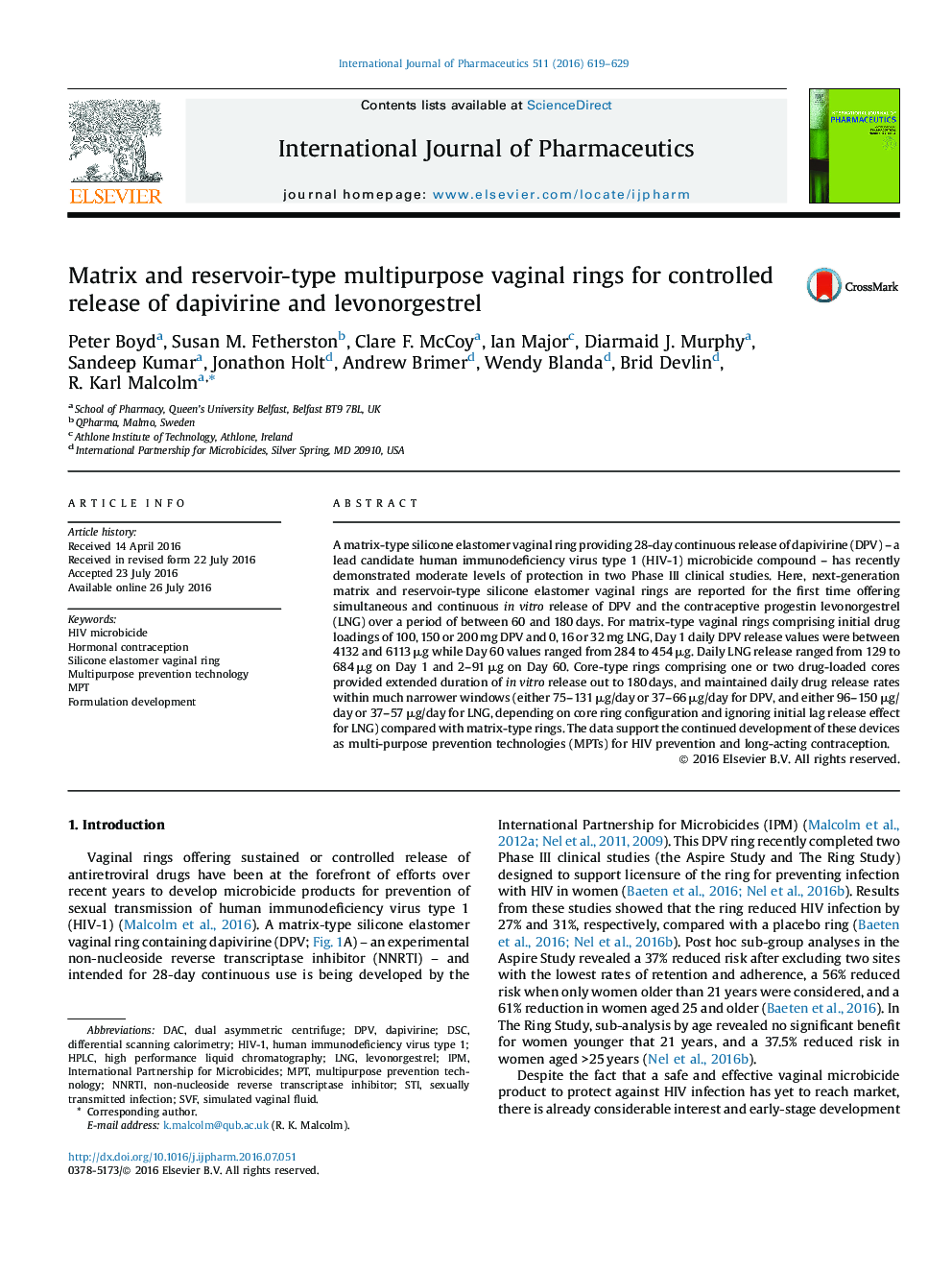| Article ID | Journal | Published Year | Pages | File Type |
|---|---|---|---|---|
| 5817548 | International Journal of Pharmaceutics | 2016 | 11 Pages |
A matrix-type silicone elastomer vaginal ring providing 28-day continuous release of dapivirine (DPV) ⿿ a lead candidate human immunodeficiency virus type 1 (HIV-1) microbicide compound ⿿ has recently demonstrated moderate levels of protection in two Phase III clinical studies. Here, next-generation matrix and reservoir-type silicone elastomer vaginal rings are reported for the first time offering simultaneous and continuous in vitro release of DPV and the contraceptive progestin levonorgestrel (LNG) over a period of between 60 and 180 days. For matrix-type vaginal rings comprising initial drug loadings of 100, 150 or 200 mg DPV and 0, 16 or 32 mg LNG, Day 1 daily DPV release values were between 4132 and 6113 μg while Day 60 values ranged from 284 to 454 μg. Daily LNG release ranged from 129 to 684 μg on Day 1 and 2⿿91 μg on Day 60. Core-type rings comprising one or two drug-loaded cores provided extended duration of in vitro release out to 180 days, and maintained daily drug release rates within much narrower windows (either 75⿿131 μg/day or 37⿿66 μg/day for DPV, and either 96⿿150 μg/day or 37⿿57 μg/day for LNG, depending on core ring configuration and ignoring initial lag release effect for LNG) compared with matrix-type rings. The data support the continued development of these devices as multi-purpose prevention technologies (MPTs) for HIV prevention and long-acting contraception.
Graphical abstractDownload high-res image (211KB)Download full-size image
